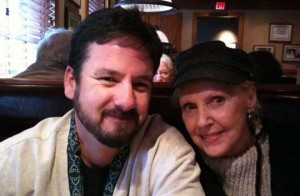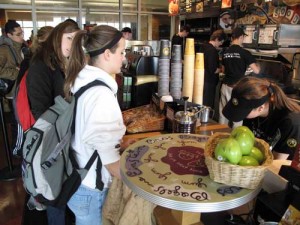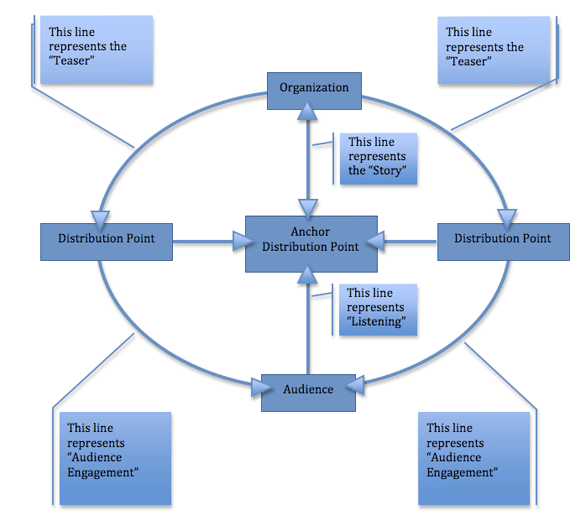So it is my goal this year to look beyond the my current universe and begin to find other avenues beyond Flash video. Yes….for the past two and half years, I have been using Flash Video (FLV) to compress and distribute video content. Why did I start using it?
Well, at one time we were using WMV (Windows Media) as the primary platform, our current Director of IT had us on a windows platform and it made sense. It was clean, flexible yet we were missing a major target audience, the Mac World. From a user standpoint, Flash Video had a bigger penetration rate plus it looked real clean with HDV content. So off we moved to Flash video. The downside, the compression time TAKES FOREVER! WOW! But, it was flexible and had many robust player options, and every developer under the sun was creating so many options for Flash Video.

How are we currently reaching mobile audiences, well there is this great new place called YouTube. Yes, god bless these souls. They are the work around. Upload the video content to your YouTube channel, then grab the readily available embed code for your web page, and SHIZAM….you can have most of the mobile devices access your video content. Yes it is a Flash player, but since they have contracts with major mobile platforms like the iPhone, you can play video embedded into your website if it is hosted on YouTube. The problem, once you upload the content…it is no longer your content, it is owned and operated by YouTube. Yes, this free distribution channel doesn’t want to be liable if their servers take a big ole hiccup and your audience can’t watch your favorite video of Uncle Al busting his ass coming down the stairs or your corporate video that needs to play in front of investors.
So really, this year is dedicated to more than just moving away from my technological dependency of Flash video, but also my hosting/contract dependency of YouTube. I want to find a place to store my content, distribute it to the targeted audiences, and maximize the quality my clients pay me dearly to provide. Now, thanks to H264 codecs…this is possible.
So far, I have only found one place that makes sense….I think, Sorenson360. I have looked at Brightcove, Ooyala, Veeple, and Kaltura….but Sorenson360 has my vote right now. This is why…pretty simple. I set-up a trial account, uploaded an H264 Quicktime (.mov), it asked me if I wanted to distribute to the web and mobile (I said yes), it gave me a simple embed code, I dropped it into my blog, pulled out my iPhone, and behold…my video play instantly on my iPhone. ***Side note, Brightcove and Ooyala have harassed the snot out of me since i signed up to check out their trial area. Actually Brightcove was very nice, but not Ooyala.***
I am looking forward to HTML5 and the opportunities it will bring. But I am a one man type of show. I can hire some developers to create a platform to upload, compress, and distribute content for my clients…but Sorenson360 did this within a matter of minutes.
Video distribution should not be what limits us to provide a message to an audience, it should enable us to reach larger audiences. It should provide a pathway to reach groups of individuals regardless of the “technology” they use to access information. It is my goal to embrace technologies to reach these groups. The same is true for Social Media technologies, they are a tool and it is up to us as practitioners to use them if it meets the needs of the audience. We have a story to tell!
BTW…I already know how to host, compress, and distribute video content on dedicated or virtual servers. I understand the ROI for the use CDN’s and the Amazon’s Cloud to encode and distribute video content. But, I am one man that likes to focus on telling stories, not managing a server network. It is time focus on my core competency…telling rich stories.

 You see, it was that day the young owner of this Fatz Cafe had talked Shryl into coming back part time. That owner knew that Shryl had a tribe, a group of people that enjoyed seeing her smiling face….that special touch when it comes to true customer service. I made a new friend that day and I will never see Fatz Cafe as just the building that serves great fried chicken strips, I will see it as the place where I can come talk to a friend and the fried chicken strips are the bonus.
You see, it was that day the young owner of this Fatz Cafe had talked Shryl into coming back part time. That owner knew that Shryl had a tribe, a group of people that enjoyed seeing her smiling face….that special touch when it comes to true customer service. I made a new friend that day and I will never see Fatz Cafe as just the building that serves great fried chicken strips, I will see it as the place where I can come talk to a friend and the fried chicken strips are the bonus. Now if you take that same principal and place it into your everyday work routine. Imagine taking just a few minutes everyday and meeting someone new. The cup of coffee is just a pathway to a conversation…it is a connection point. So is thaa game of golf or other relationship building tool…just a connection mechanism. But do we really foster those relationships?
Now if you take that same principal and place it into your everyday work routine. Imagine taking just a few minutes everyday and meeting someone new. The cup of coffee is just a pathway to a conversation…it is a connection point. So is thaa game of golf or other relationship building tool…just a connection mechanism. But do we really foster those relationships? So each semester, I take one day and make my students follow me to the coffee shop on Clemson’s campus. Today was that day. It was a day to forget about proposals, projects, and grades…it was a day to talk about what it means to leverage those relationships and the greatest potential that walks by them each day during class change.
So each semester, I take one day and make my students follow me to the coffee shop on Clemson’s campus. Today was that day. It was a day to forget about proposals, projects, and grades…it was a day to talk about what it means to leverage those relationships and the greatest potential that walks by them each day during class change. Use frequency when telling these stories. Find the people that have stories that change a view-point, raise someone’s’ awareness, or reveal a new idea…and tell those stories. Tell them on a regular basis. Identify the layers of the stories and use those layers as the frequency. Each time you tell a story, peel away one more layer…one more piece of the bigger story. As one more piece is revealed and each micro story is told…the audience gains a bigger insight into the “red-string”.
Use frequency when telling these stories. Find the people that have stories that change a view-point, raise someone’s’ awareness, or reveal a new idea…and tell those stories. Tell them on a regular basis. Identify the layers of the stories and use those layers as the frequency. Each time you tell a story, peel away one more layer…one more piece of the bigger story. As one more piece is revealed and each micro story is told…the audience gains a bigger insight into the “red-string”.